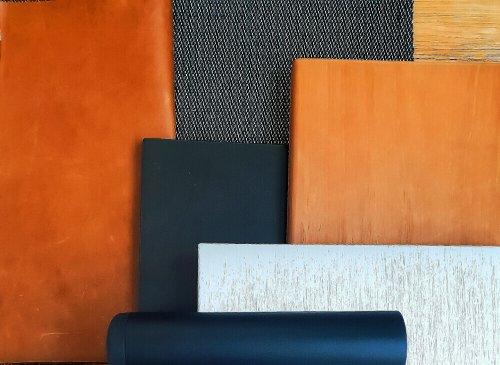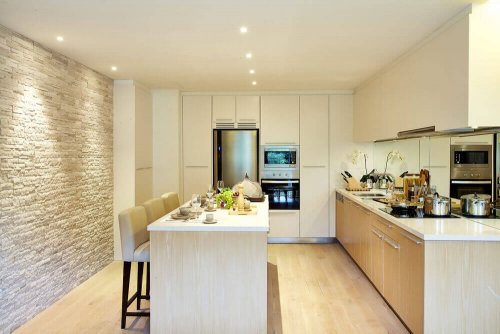How to Use Textures in Interior Design

In interior design, we use what’s commonly known as visual weight. This effect helps avoid a room to look flat. In order to achieve visual weight, many people use textures that combine the contrast and depth needed to create emphasis on certain elements.
Any interior design is below professional level when there isn’t a texture scheme designed. The reason why this is so important is so that the decoration looks balanced and somewhat unpredictable. The texture is the sensation produced by how things feel through our senses.
Texture in interior design is an art. One must learn to mix different sensations such as rough and soft. Although you may think that this refers to a tactile effect, it’s actually a visual effect. In fact, using texture correctly goes far beyond mixing materials. Elements such as light or layering are some of the tricks that help use textures the correct way.
Layer overlay

In decoration, rich, deep-filled schemes are key in the creation of multiple layers. It’s all about making textures coexist with one another, resulting in a great environment. Regardless of the elements that you choose to include with the textures, they must create contrast with each other.
Let’s take an example. Imagine the glass of the base of a table lamp with some old leather-cover books placed next to it. The contrast of the materials such as glass and leather would make a great impact. Another example would be the contrast of a polished granite fireplace with a fluffy carpet at its feet.
Walls are always a good framework to use textures. There are so many different things we can do to give walls a multidimensional effect, such as placing paintings and works of art on them.
How to use textures with fabrics

Without a doubt, some of the best sources for texture in decoration are fabrics. Using them provides a room with the correct balance between texture and contrast.
We can create texture by combining the colors of textiles. However, something very popular among designers is using different materials with fabrics in the same tones. This creates depth and texture in a simple way and provides amazing results.
If you want to give your home texture through fabrics, don’t limit yourself exclusively to sofas and cushions. All the fabrics of the room must participate in the texture game. This includes curtains, carpets, upholstery, and lampshades.
The combination of linens with velvets and fuzzy wool with shiny silks or faux fur is always a success. Using the same type of fabric throughout the room is a very common mistake in decoration. In order to use textures correctly plus give your room a unique look, you must be daring and leave your comfort zone aside. Don’t hesitate to play with colors and contrasts!
Textured furniture

Furniture, in general, provides a great opportunity to add texture to a room. The contrast of cold and smooth marble or a glass table on rattan or wool rugs immediately creates texture in a dining room.
Having a sofa and an armchair of the same color but with different fabrics is another way to achieve this effect. A coffee table without defined borders located in a room with simple lines is another example of how you can use textures correctly without being a professional.
Textured accessories

These are our favorites. They provide the possibility of adding texture to a room without having to plan it excessively. In addition to this, they give the opportunity to add texture to rooms that are already decorated but somewhat flat and without contrasts.
In this case, the trick is being careful not to overdo it. If you add way too many accessories, there’ll be a parade of textures throughout the room. You don’t want that. Instead, choose some that give off the opposite effect to the area of the room where you’re going to place them.
Don’t hesitate to play with glass, whether vases or mirrors. Also, items such as trays, sofa blankets, cushions, lamps, and plants can make a great difference. These decorative elements easily provide a contrast of textures. Make sure to choose them in materials and finishes that you don’t already have in the room.
Don’t forget about the lighting

People often forget about lighting when decorating their houses. Interior designers always make sure to include the lighting scheme in their projects. However, at a non-professional level, many end up turning a blind eye to it.
You can add as many accessories as you want. However, at the end of the day, lighting is what will add the most visual character to the room. Warm white lights bring softness to the room, while cold white lights add hardness. Plan the light’s location in accordance with this.
Playing with direct and indirect lighting is the best way to finish adding texture to the desired space. Turning dark corners into reading areas with an appropriate floor lamp or table, or illuminating the pictures on the walls are examples of using textures intelligently and making the most out of them.